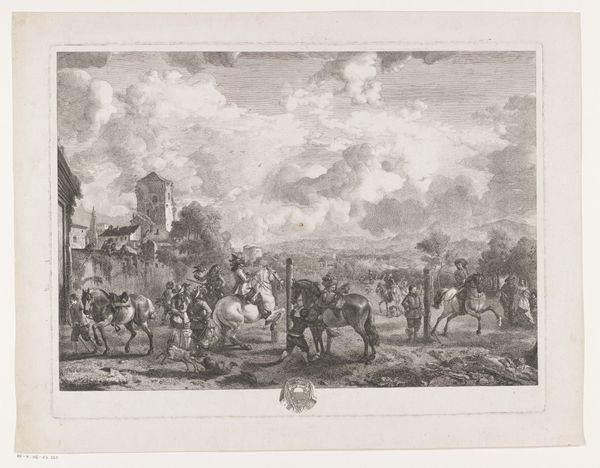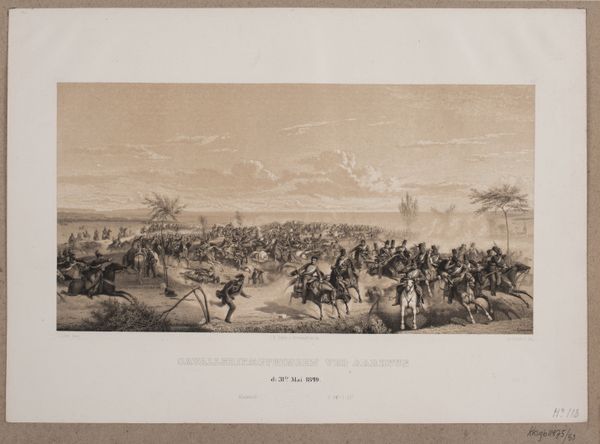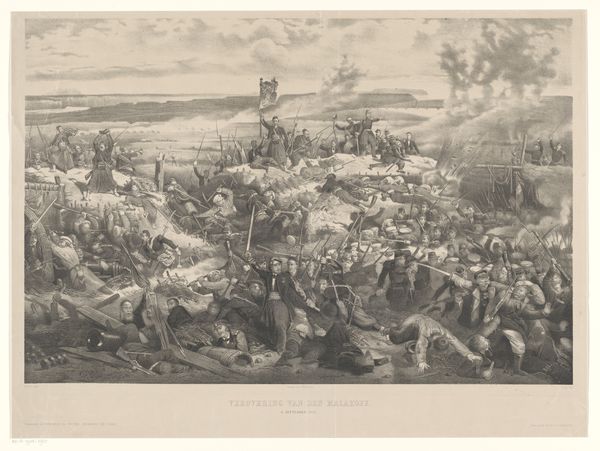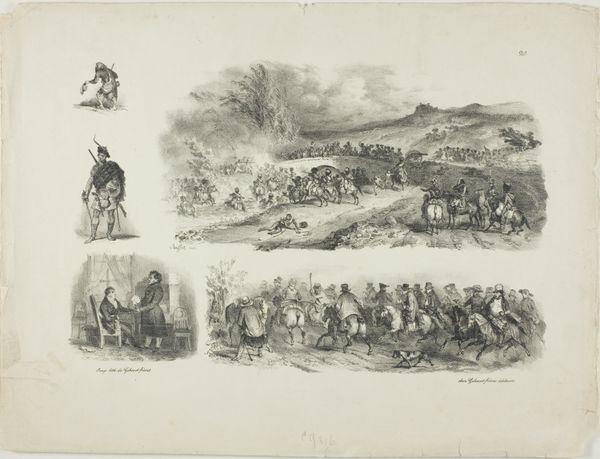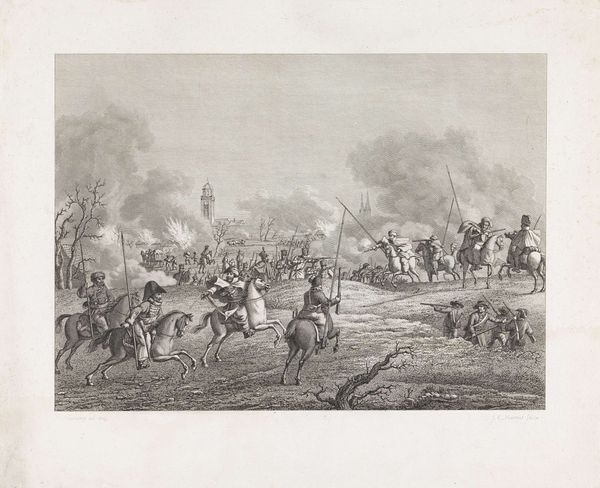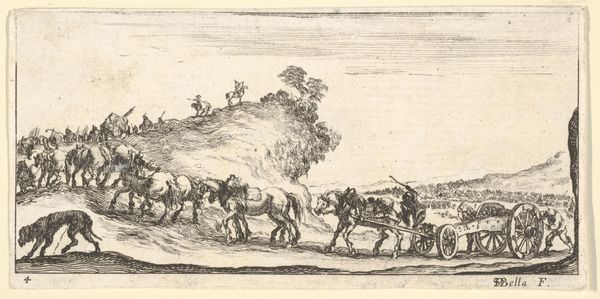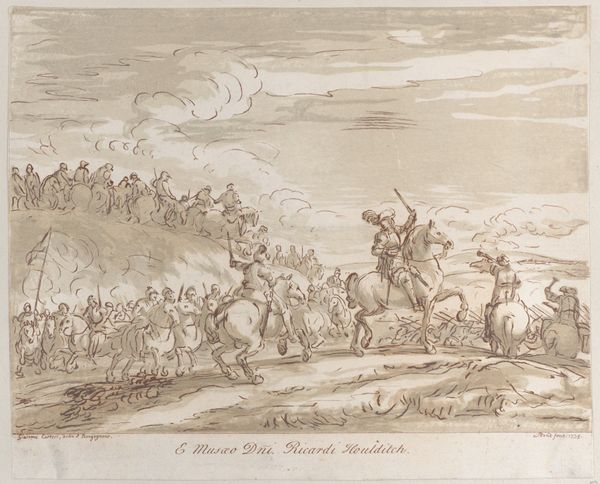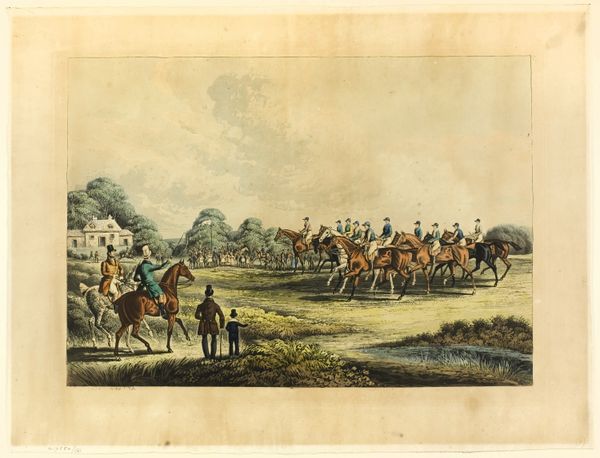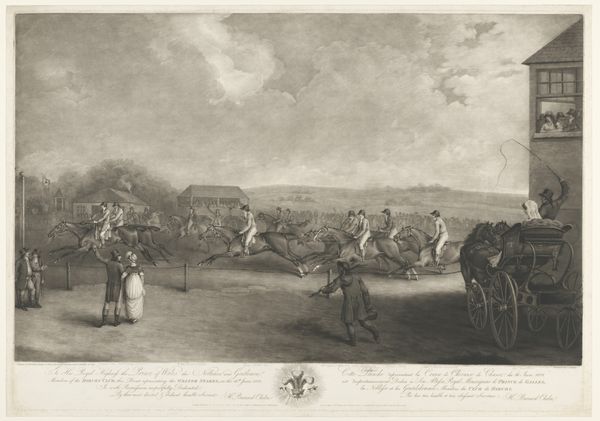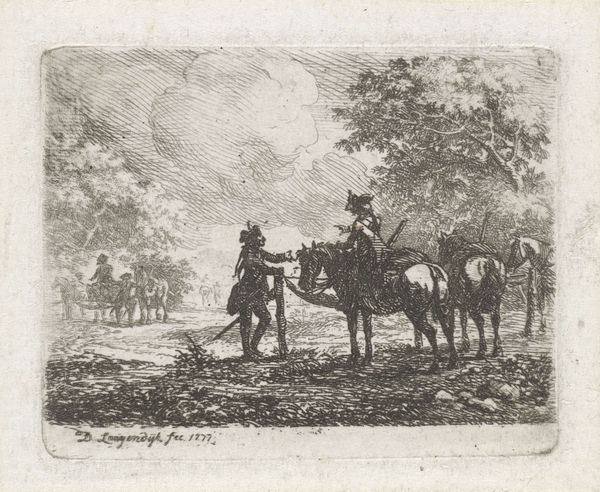
Dimensions: height 277 mm, width 435 mm
Copyright: Rijks Museum: Open Domain
Editor: We’re looking at "Militairen op de heide," or "Soldiers on the Heath," a pencil drawing by Charles Rochussen, sometime between 1824 and 1894. It feels quite formal, almost like a staged photograph. The landscape itself feels very barren. What do you see in this piece, looking at it from a symbolic perspective? Curator: Indeed. The "heath" itself is potent. Historically, the heath has been seen as a place of both refuge and peril - a liminal space between cultivation and wilderness. Observe how the figures cluster. Are they at rest? The almost ceremonial positioning of figures, juxtaposed with the open, somewhat bleak landscape, suggests a moment of transition. Perhaps marking a pause before engagement, or even reflecting on the aftermath. Does it not evoke contemplation? Editor: That’s interesting! I hadn't considered the heath as being symbolic itself. So, the image then portrays the psychological landscape as much as the physical one. Curator: Precisely. Consider how the arrangement creates a sense of unity and division. There's a hierarchy visible within the groupings, from foot soldiers to horsemen. What is being conveyed by the visual organization of rank and purpose? The individual psychology of the soldier yields to the larger army identity. The details embedded are ripe for inquiry, don’t you think? Editor: Absolutely. Now, when I look at it again, it almost feels like a meditation on duty, but tinged with loneliness and perhaps even foreboding. Thanks, I see so much more in this artwork. Curator: My pleasure. Understanding these symbolic layers unlocks not just the art, but also our own engagement with history. It speaks to the collective and personal experience, then and now.
Comments
No comments
Be the first to comment and join the conversation on the ultimate creative platform.
